“Smishing (SMS Phishing): Complete Guide to SMS Attacks & How to Stay Safe”
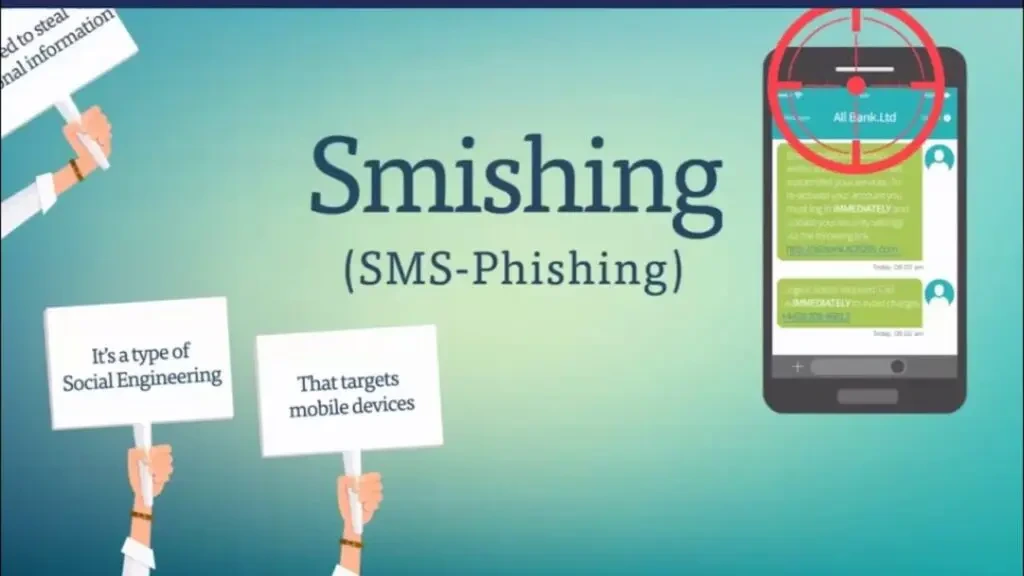
~ Introduction :-
Cybercriminals today use sophisticated tactics to steal financial and personal data. Smishing is a common but little-known type of cyber attack. But what is smishing and how can you avoid it? This essay will go over the concept of smishing, how it works in real life, and how to protect yourself against it.
~ What is Smishing :-
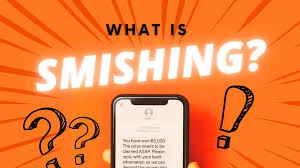
Smishing is a combination of SMS (Short Message Service) and Phishing, this means when hackers send false text messages to trick the users into disclosing their sensitive information, such as login passwords, bank information, or personal information.
Unlike phishing, which is typically done through emails, smishing assaults are done using text texts. These text messages are frequently designed to appear real, resembling a reputable business such as a bank, government department, or internet service provider.
~ How smishing works :-
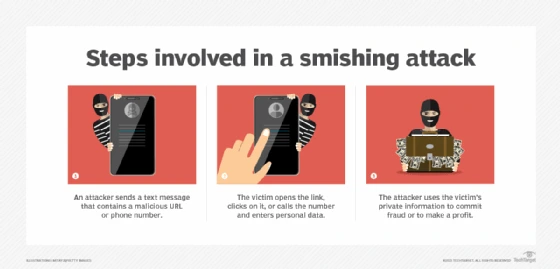
Smishing attacks use a well-planned technique to manipulate victims. Here’s how they usually operate:
- Creating a sense of urgency :-
Attackers send SMS messages that create panic, urging recipients to act immediately. Common tactics include:
- Claiming your bank account is compromised.
- Informing you about an undelivered package.
- Offering fake job opportunities or prizes.
- Using spoofed numbers (fake no.’s):-
Cybercriminals spoof (fake) sender numbers to make their messages appear as if they’re from a legitimate entity, such as a bank or government institution.
- Embedding malicious links :-
The majority of smishing attacks involve links that guide users to bogus websites. Such sites appear as genuine platforms but are created for harvesting personal information such as usernames, passwords, and credit card details.
- Requesting personal informations :-
Some smishing scams directly ask victims to reply with sensitive information, such as:
- OTP (One-Time Passwords)
- Bank account details
- Social Security numbers.
~ Types of smishing attacks :-

- Banking Smishing :-
Cybercriminals pretend to be banks and send fake SMS messages stating your account is frozen or under attack. The message generally includes a link to a spoofed banking website that captures your login details and OTPs.
- Delivery Scam Smishing :-
Thieves send imitation messages from delivery companies such as FedEx or DHL, saying your package cannot be delivered. They contain a false link requesting your personal information or a minimal charge to “redeliver” the package.
- Tax Refund Scam Smishing :-
Attackers impersonate tax authorities, and they say you qualify for a tax refund. The message takes you to a false website where you are deceived into providing sensitive information like your tax ID and bank information.
- Lottery or Prize Scam Smishing :-
Victims are sent a message that informs them that they have won a lottery, free trip, or costly device. To receive the prize, they are requested to give personal information or pay a small processing fee, which gives way to financial fraud.
- Job offer Scam Smishing :-
The scammers send spurious job offers that guarantee high-paying jobs and online work. The message contains a link to an imitation job application that harvests personal and bank details.
- Social security & Government Scam Smishing :-
Scammers send messages impersonating government agencies, like the Social Security Administration, UIDAI, or tax authorities. They say that the recipient’s benefits are under threat or need to be verified urgently. Those who provide their Aadhaar, PAN, or bank information might become victims of identity theft or financial fraud.
- Tech Support Scam Smishing :-
The scam entails messages alerting users that their phone is infected or their account is compromised. The SMS invites them to call a fake technical support number or to click on a link to get help. Victims are then convinced into installing malware or paying exorbitant amounts of money for nonexistent technical support services.
These are the most prevalent smishing attacks, but new forms are constantly coming up. Be always on guard when receiving unsolicited SMS, particularly those that have links or urgent requests. Be vigilant and never give away personal details through text messages!…
~ How to identify smishing attacks :-

- Unexpected messages :-
If you are sent an SMS from a bank, courier, or government organization without having interacted with them previously, beware. Genuine organizations do not send unsolicited requests for information.
- Threatening or emergency language messages :-
Smishing messages are threatening, alerting the victim of account closure, legal proceedings, or security breaches. Scammers employ fear to pressure victims into clicking on harmful links or divulging sensitive information.
- Suspicious links :-
Spammers post fake links that look like real sites. Always check URLs cautiously—minor misspellings or unfamiliar sites suggest fraud. Never click on unrecognizable or shortened links.
- Request for personal information :-
Legitimate businesses never request passwords, OTPs, or banking information through SMS. If a message asks for sensitive information, it’s probably a smishing scam trying to steal your data.
- Unusual sender numbers :-
Legal companies employ verified shortcodes or official numbers of contact. In case the SMS is from an unknown mobile number, international number, or random numbers, it’s suspicious.
- No personalisation :-
Genuine organizations utilize your account or name information. A generic salutation such as “Dear Customer” or “User” signals a bulk scam effort instead of a and a legitimate message.
- Asking you to call an unknown number :-
Smishers can request you to dial an imposter customer service number. The numbers lead you to scammers who attempt to get personal information or deceive you into making payments.
~ How to Protect Yourself from Smishing Attacks :-
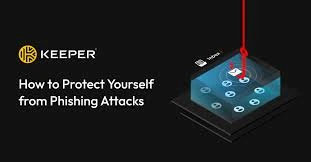
- You can prevent smishing if you know how. Be aware and cautious. Follow these measures to protect yourself:
1. Never click on unusual links :-
If you receive an SMS with a link, do not click on it unless you are positive it is from a trusted source.
2. Check with an official source :-
Instead of reacting to the message, call or visit your bank or service provider’s official website.
3. Use two-factor authentication (2FA) :-
Enable 2FA for online and banking accounts to offer an extra degree of security.
4. Block and report Smishing Messages :-
Most cell phones can block numbers and report spam messages to their mobile network provider.
5. Utilize security software :-
Install anti-phishing and anti-virus software to detect and prevent fraudulent links.
6. Educate yourself and others :-
Cybercriminals are constantly changing their methods. Learn about emerging scams and share them with your family and friends.
~ What to do if you fall victim to smishing :-
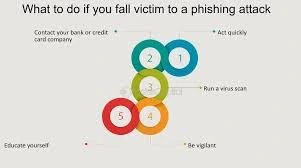
- Disconnect immediately :-
Close any suspicious links, disconnect from Wi-Fi, and enable airplane mode.
- Change Passwords & Enable 2FA :-
Secure compromised accounts with strong passwords and two-factor authentication.
- Contact Your Bank :-
Report any suspicious transactions and, if required, block access to the account.
- Scan for Malware :-
Use antivirus software to detect and destroy threats.
- Report the Scam :-
Notify your bank, mobile operator, or cybercrime authorities.
- Monitor Your Accounts :-
Check for suspicious activity and report any fraud.
- Warn Others :-
Spread awareness to prevent further victims.
~ Conclusion :-
Smishing is a new cyber threat that targets unsuspecting people using SMS messages. You can avoid becoming a victim of such frauds by understanding how smishing works, being aware of strange messages, and following basic security practices.
Protect your digital identity by being cautious, checking before clicking, and spreading the news!
📌 Have you ever received a smishing message? Share your experience in the comments!